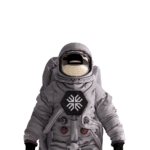Have you ever looked at your competitors that claim to be serving a ‘billion dollar market’ and wondered, “there’s no way their TAM is that large!”
If so, you’d probably be right. Sure, a founder could quickly spin up an idea of what their slice of the market looks like to pique the interest of the investors, but nine times out of ten, these claims don’t translate to actual paying customers.
But before you go pointing fingers at these founders, you have to understand that there are plenty of myths surrounding how total addressable markets (TAMs) are actually calculated and understood — we’ve dubbed these as the “5 myths of market sizing.” We even recorded a whole webinar on it which you can watch here.
In this article, we’ll be debunking these myths around TAM analysis and show you how to use this data to make better business decisions.
Defining TAM and SAM
Before debunking these myths around market sizing, we need to agree on some key terminology:
Total Addressable Market (TAM): TAM refers to the total market opportunity that is available to your company in a perfect world where you have the ideal product offering and 100% market share. Think of it as the entire universe that your product orbits in.
Serviceable Addressable Market (SAM): Also called Served Available Market, this is the subset of the total addressable market that you can realistically serve given your current products, pricing, processes, partnerships, and overall business model.
For example, if you’re launching new telemedicine software, your TAM may consist of all healthcare spending globally that’s expected over the next decade. It sets the outer bounds for what’s possible.
In contrast, your SAM factors real-world constraints on your end-user audience (e.g. developed countries with widespread smartphone adoption), product capabilities (e.g. urgent care not surgery), and addressable channels (e.g. partners that allow a white-labeled offering). The summed revenues of this subset are what make up our serviceable available market.
As Gustafson puts it, “Half the world is men. That doesn’t mean half the world will buy your shaving kit.” That’s what TAM vs. SAM is all about. TAM attracts headlines, while SAM attracts budgets, and getting both right allows you to make business decisions rooted in reality.
5 myths around calculating TAM
Now that we’ve defined TAM and SAM, let’s explore some of the myths that can undermine your TAM analysis.
Myth 1: A big market automatically equals success
Truth: Targeting a large TAM doesn’t guarantee customer acquisition. Instead, you need to be very deliberate in your product-market fit work to achieve competitive differentiation.
It’s a common fallacy among entrepreneurs and investors alike — the bigger the total market size, the easier it will be to achieve product-market fit, gain customers, and grow revenue. This is a talk track that has left many an entrepreneur with big ambitions and empty wallets.
While pursuing a huge market opportunity might seem enticing on paper, the size of the total addressable market (TAM) prize only matters if you have a credible and differentiated product and value proposition to capture it. Basically, unless you can differentiate yourself based on your company’s niche, GTM model, price, quality of service, etc., you’ll just get beaten down by the established legacy players in your market.
Myth 2: Pre-packaged TAM figures are sufficient
Truth: Forrester and Gartner don’t know your product, customer segmentation, or market penetration. Relying solely on these third-party data sources leads to unrealistic market sizes.
When developing a top-down view of your total addressable market potential, it’s tempting to solely reference the big analyst numbers that are already out there for your target industry or software category.
However, while third-party market research reports can be a helpful jumping off point, their broad conclusions don’t take into account your unique value proposition. In other words, they’re operating off sweeping generalizations about what your product does and who it serves.
Some of the other variables that industry headline figures ignore include:
- Willingness to pay: Are your users underserved and willing to spend more for your unique benefits?
- Current market gaps: Does your product fill existing gaps in the market?
- Impact of realized pricing: How will volume discounts, product bundling, and temporary promotions lower your average selling price compared to list pricing?
If you really want an accurate depiction of your TAM, you shouldn’t rely on industry figures alone. Instead, you can conduct current user interviews, analyze your sales and discovery calls, or review industry benchmarker based on real user data to better understand your TAM.
Myth 3: Your TAM and SAM are the same
Truth: Claiming a market size based on adjacent or existing markets leads to inflated and inaccurate representations of your TAM.
Another common mistake is conflating the total addressable market (TAM) and serviceable addressable market (SAM). However, as defined earlier, TAM and SAM differ fundamentally in their market share assumptions.
While TAM refers to the total revenue opportunity with 100% market domination, SAM factors real-world constraints on product, pricing, partnerships, and promotions to arrive at a realistic group of customers you can actually serve.
Without defining your exclusive wedge into a broader market, new ventures can’t credibly claim multi-billion dollar SAMs in the early years.
If you want a more accurate depiction of your SAM, you need to start factoring in the following variables:
- Target personas: Industry, company size, role titles, and tech fluency
- User behaviors: Current workflows, pain points, and switching costs
- Direct competition: Incumbents, alternatives, threats
- Go-to-market: Channels, partnerships, and promotions
By framing your serviceable addressable market against the wider competitive landscape, you can start carving out a realistic path to unlocking your broader TAM.
Myth 4: Adjacent market equals my market
Truth: You can’t claim an adjacent market to overinflate your own market opportunity.
When analyzing your total addressable market potential, it’s tempting to look at hot or rapidly growing adjacent spaces and claim, “Our market is that big!” But no… you can’t point to an adjacent market to inflate your own potential.
Instead, focus on analyzing your direct competitors — products that are targeting the same users or solving the same pain points. Sizing your TAM based on these comparable solutions will give you a better idea of your market potential.
Sure, an adjacent market analysis still provides useful context on general trends, partnerships, and future expansion opportunities, but it tells you very little about the customers you can currently serve.
Myth 5: TAM is static over time
Truth: Your TAM will continually evolve over time.
According to Gustafson, “Markets are continuously evolving based on trends like globalization, consolidation, regulation, and innovation. Periodically reevaluating your TAM allows you to spot new adjacencies before competition stakes their flags there.”
In other words, a TAM analysis is never a one-and-done process. Several different assumptions go into market modeling, including growth rates, churn, and pricing, for example — you need to continually update these assumptions for your TAM analysis to remain relevant.
Additionally, if you aren’t regularly analyzing your TAM, you run the risk of getting stranded in a shrinking niche. By checking in on your TAM, you’ll be able to stay one step ahead of the competition and position your company for future growth opportunities.
How investors view TAM
Beyond your company’s own operators and executives, your TAM projections also inform the way investors think about fundraising and exit planning. Here’s a glimpse into how investors process market sizing assumptions:
Assessing opportunity and exit potential
Savvy investors typically apply various mental models to translate your future TAM into return potential.
Some of the more common methods for calculating potential ROI include:
- Target revenue at exit based on comparable exits or expected multiples
- Required market share to hit target revenue if TAM is much larger
- Feasibility of capturing required share given competitive assumptions
- Expected dilution from future fundraising rounds
So even if you have a sizable TAM, investors will still scrutinize your company’s valuation and fundability based on the current trends and dynamics of your market.
Future market direction and evolution
Investors will also assess if your early TAM assumptions show any future potential for longer-term expansion. For example, many enterprise software companies are able to serve multiple verticals and customer segments — would your company be able to expand into an adjacent market? Or serve customers upmarket or downmarket?
Even if you have an incredible niche SaaS product, your company’s future potential will affect how investors assess your funding eligibility and exit valuation.
Timeframe considerations
While your TAM may reach billions of dollars down the road, investors care most about what markets will be accessible to you over the next 3-5 years. In other words, if your $10B TAM realization depends on some rapid shift in consumer behavior that’s decades away, investors will discount projected revenues or extend their projected payback timelines.
3 ways to measure and track your TAM over time
At this point, we’ve dispelled all the myths on TAM claims and have shown you how investors think about your market size from their perspective. Now, let’s explore a few techniques you can use to measure and track your total addressable market over time.
1. Market share analysis
Analyze competitor annual reports, third-party data, and related information like recent job postings, competitor reviews, or recent funding news in your space. Based on this data, you can start to determine if you’ll be able to compete for market share. For example, if the top players in your space represent 60% of total market share, you still have a solid chance of earning your own share of the market.
2. Study market participation rates
Within your segment, determine how many customers, on average, are looking to switch solutions in a given year based on average market participation rates. If you notice that existing customers switch software vendors every few years, you can expand your future TAM based on these potential customers. The only caveat here is that these future prospects need to be a good fit for your product or service based on the pain points you help solve.
3. Examine the growth of your category
When it comes to measuring your future TAM, you’ll want to factor in how your market is projected to grow or shrink in the near future. You can use historical data from research firms and associations to inform these assumptions; however, you should also factor in external variables as well:
- Are tech budgets expected to grow/shrink?
- Is your vertical or sector becoming commodified?
- Will there be future users experiencing a pain that you’re uniquely positioned to solve?
All of these variables will help you determine how your category is expected to grow or shrink in the future.
Your TAM serves a strategic purpose
In closing, let’s review some of the big takeaways from CJ’s thoughts on how to leverage your TAM correctly.
- The size of your market should be used to inform your business strategy, not inflate the egos of your founders and executives
- Be sure to draw a clear line in the sand of what your TAM vs. SAM looks like so you can accurately assess your current and future market potential
- Conducting regular TAM analyses will keep your business decisions grounded in reality
- Be a student of your market. Keeping tabs on market trends and dynamics will make it easier to adjust your TAM as needed.
Ultimately, TAM exists to help your business leaders make better decisions about your company’s current and future trajectory—but you need the right data to inform your decisions.
If you want more insights on how to use your TAM, check out our full webinar with our CEO, Randy Wootton and guest CJ Gustafson, 5 Myths of Market Sizing: Debunking Common TAM Misconceptions.



